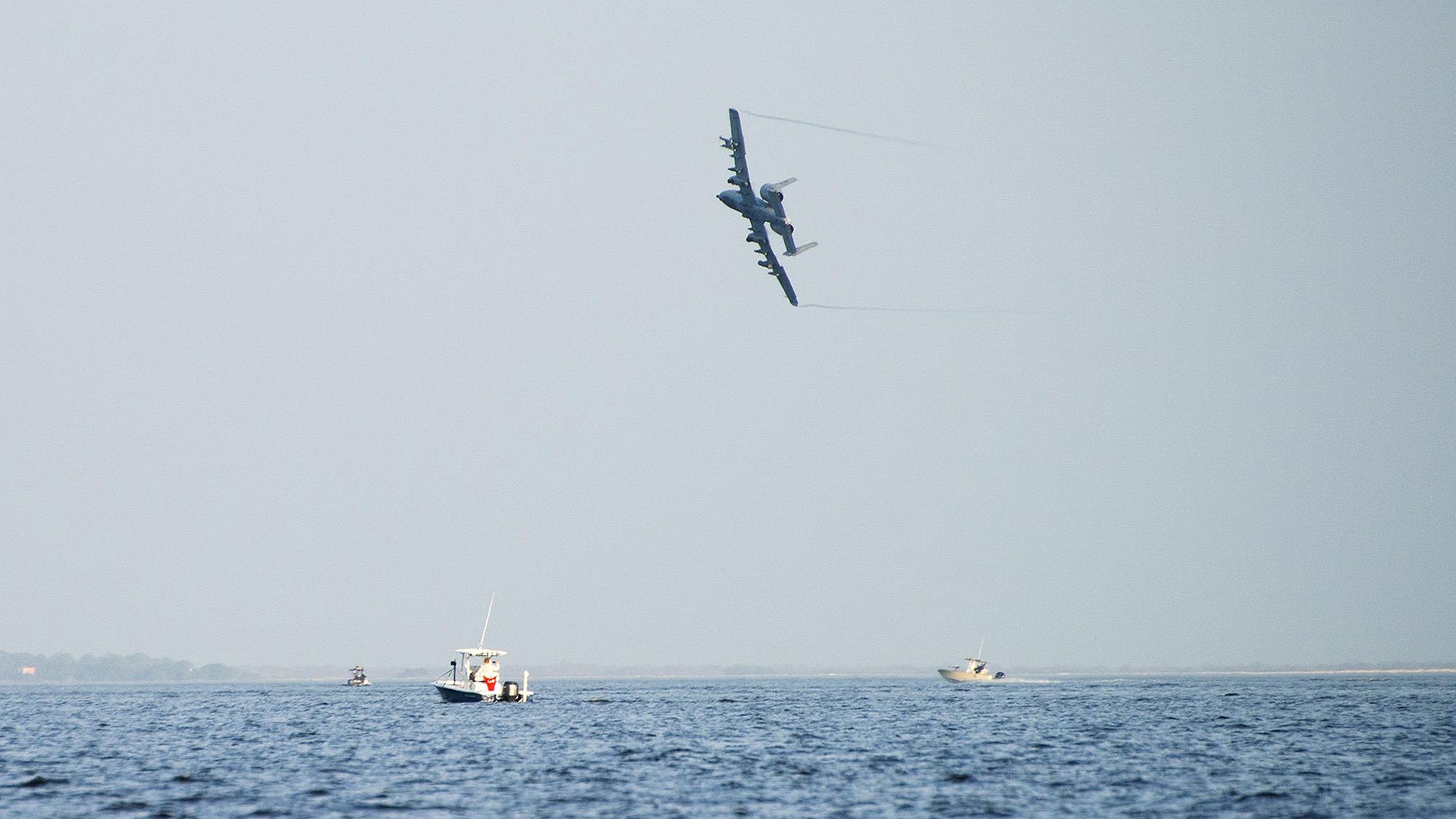The idea that the venerable A-10 Warthog is a “single mission” aircraft is just flat-out wrong. In February 2017, the blunt-nosed attackers showed off their maritime abilities by flying mock attack runs against small boats as part of a routine training exercise. But even more interestingly, the practice targets looked suspiciously like the kind of speedboats the Iranian Revolutionary Guard Corps Navy (IRGCN) operates in the Persian Gulf.
Of course, the U.S. Air Force regularly puts squadrons through these exercises to test their proficiency in actually delivering ordnance. The service refers to the ground attack portion of the training program as Combat Hammer.
In addition to the low-flying A-10s, this particular exercise included U.S. Navy helicopters and faster-flying Canadian Forces CF-188 Hornet multi-role fighters. To make the training more realistic, the Air Force hired more than 30 local civilian mariners to pilot their own “pirate” craft around the practice area in the Gulf of Mexico.
None of the participants fired any live weapons near these boats. During a separate live-fire portion of the event, the Warthogs shot rounds from their signature 30 mm cannons, fired AGM-65 Maverick missiles and dropped laser and GPS-guided bombs on stationary targets.
Officially, this iteration of Combat Hammer did not focus on any particular enemy. Fast-moving ships are the kind of target American fliers could encounter almost anywhere and this general threat is very real.
“There are plenty of places in the world where low-tech adversaries can mount 50-caliber machine guns and rocket launchers on small boats for use against us,” Air Force Lt. Col. Sean Neitzke, head of the 86th Fighter Wing, said. “They could also use other types of shoulder launched weapons, all of which could be a threat to American assets.”
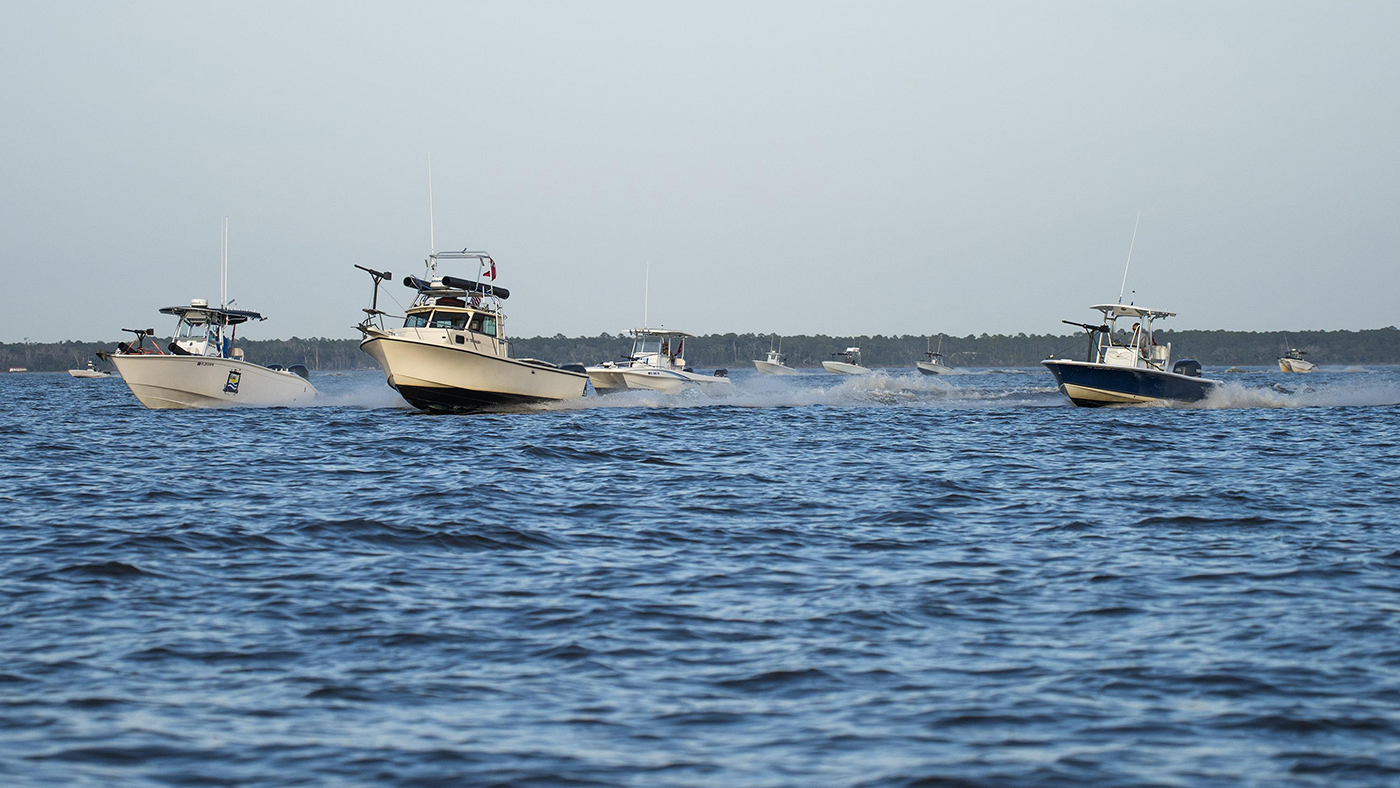
In an infamous incident on Oct. 12, 2000, Al Qaeda members slammed tiny watercraft packed explosives into the Arleigh Burke class destroyer USS Cole as it sat in Yemen’s Aden harbor. The attack put the warship out of action, killed 17 American sailors and wounded nearly 40 more.
In January 2017, Yemeni militants conducted a similar operation against the Saudi frigate al Madinah in the Red Sea. The rebels appear to have guided a remote-control boat to strike the much larger ship.
Since then, terrorists and insurgents from the Arabian Peninsula to Sri Lanka have used small vessels as improvised warships and suicide bombs on various other occasions. On top of that, drug cartels employ unarmed “go-fasts” to smuggle drugs throughout Latin America.
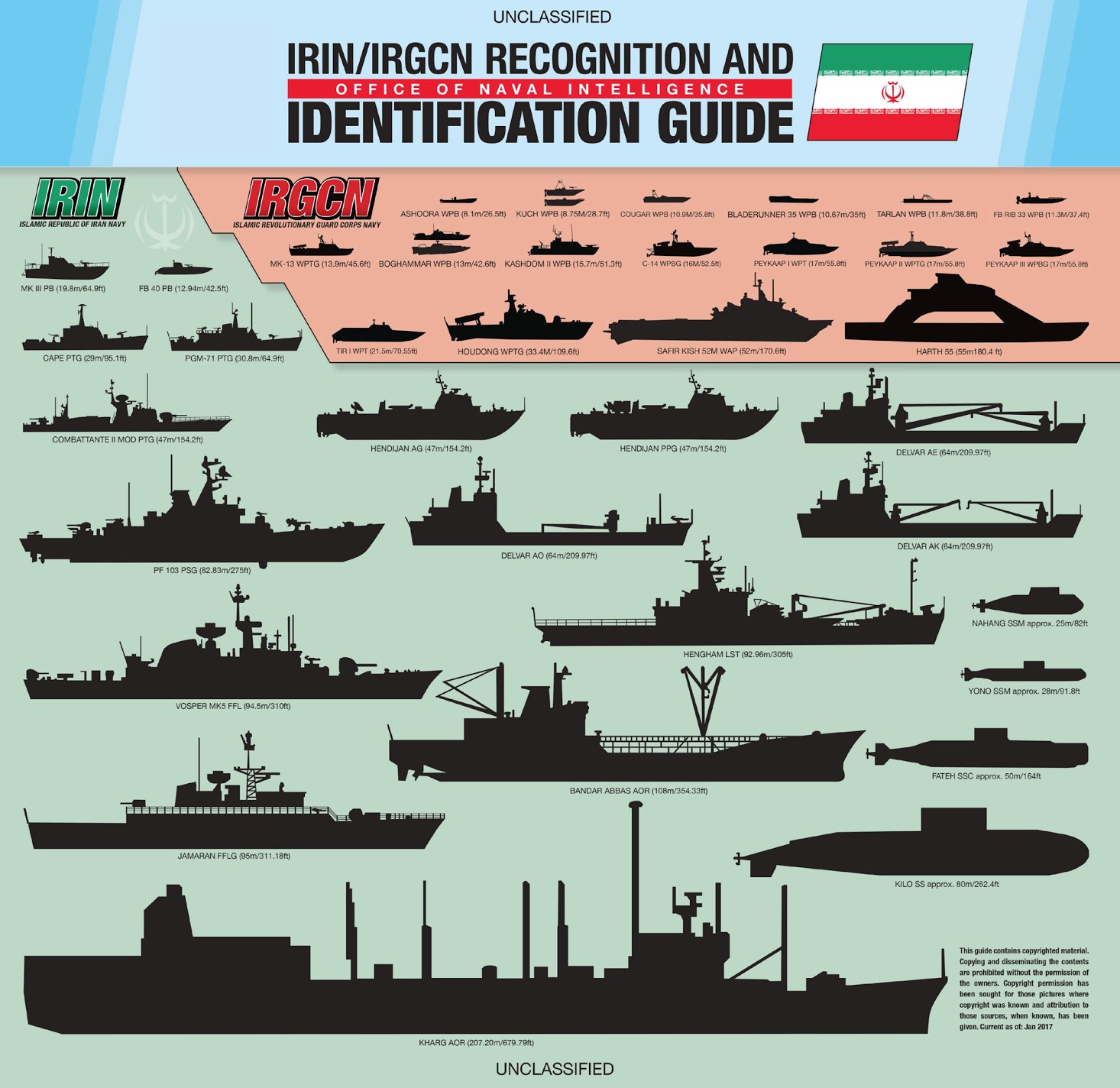
But the kind of craft Neitzke was talking are a particular hallmark of Iran’s irregular naval forces. The country routinely shows the boats off during flashy war games squarely aimed at the United States.
Fast Inshore Attack Craft (FIAC) “are lightly armed small-boats that have been a mainstay of the IRGCN since its inception in the 1980s,” the Office of Naval Intelligence noted in a February 2017 report. “they are by far, the most numerous of all IRGCN vessels.”
“Usually fitted with only machine guns and/or rockets, and used en masse, these vessels are capable of harassing merchant shipping and conducting swarm tactics during a force-on-force naval engagement.”
Most of these boats are armed versions of commercial speedboats. Common armament includes 7.62 mm and 12.7 mm machine guns, 107 mm rockets and individual sailors with weapons ranging from rifles and rocket propelled grenades to man-portable anti-aircraft missiles.
It was IRGC sailors in exactly these sorts of boats who captured two American riverine craft in the Persian Gulf in January 2016, touching off a major international incident. The Navy ultimately blamed its own commanders in the region for the circumstances leading to the incident, but insisted Iranian forces had acted illegally.
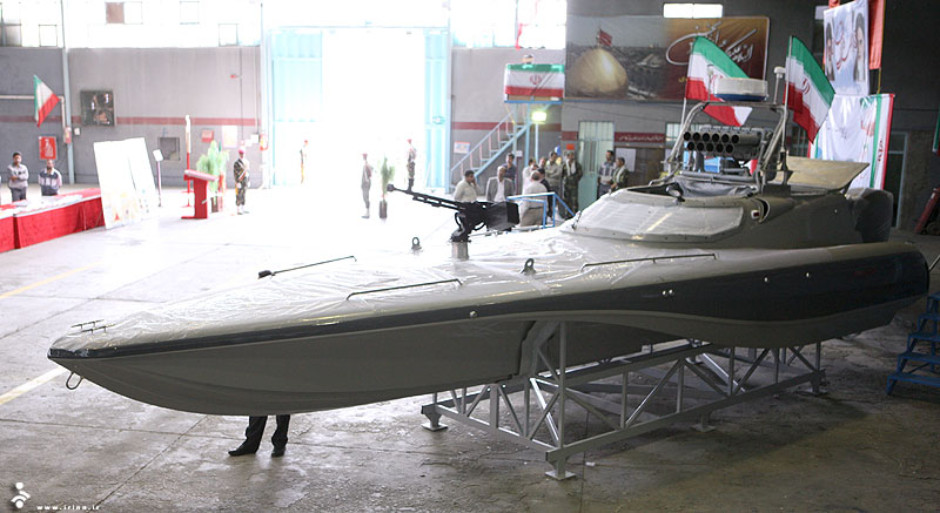
The actual effectiveness of these impromptu warships is a matter of debate. During the Tanker War sideshow to the Iran-Iraq War in the 1980s, American warships and helicopters took on a variety of Iranian Navy ships.
Over the course of a series of operations between 1987 and 1988, American sailors and aviators sunk and damaged number of enemy vessels, including diminutive FIACs and larger corvettes and mine layers, which threatened international oil shipments and their U.S. escorts. The term “Boghammar,” the name of a Swedish boat manufacturer that had supplied some craft to Iran, quickly became synonymous with a whole category of IRGCN vessels.
Though Iran conclusively lost these battles, the experience only seemed to reinforce its interest in speedy boats. “The IRGCN’s infatuation with speed has also influenced its FIAC acquisition efforts,” the Navy’s report added.
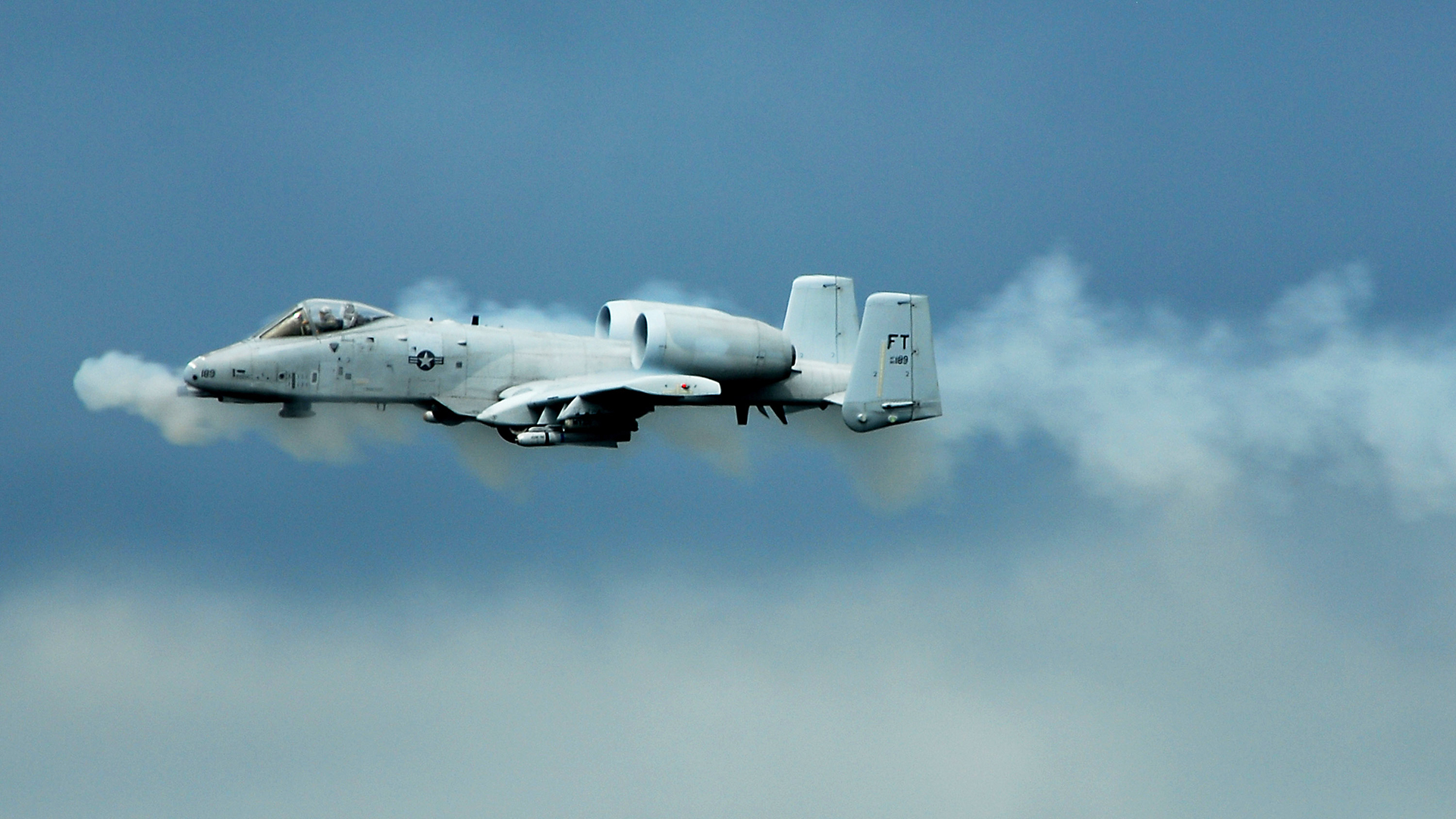
In 2010, Iranian officials debuted the latest addition to the country’s fleet of small attack boats, an armed copy of British shipmaker Ice Marine’s Bladerunner series. Known as either the Siraj-1 or Seraj-1, the craft had a typical armament of one 12.7 mm DShK-type machine gun and an 11-tube 107 mm rocket launcher.
The IRGCN touted its new acquisition as the “fasted military vessel in the world.” Reports suggest Iranian engineers may try and add torpedoes or anti-ship missiles to the stealthy-looking ship or additional derivatives in the future.
In any renewed conflict with Iran, American ships, gunship helicopters, drone and warplanes would probably all end up hunting down these fast moving opponents. As the Combat Hammer session showed, the A-10s could be one valuable addition to those operations.
Contact the author: jtrevithickpr@gmail.com
